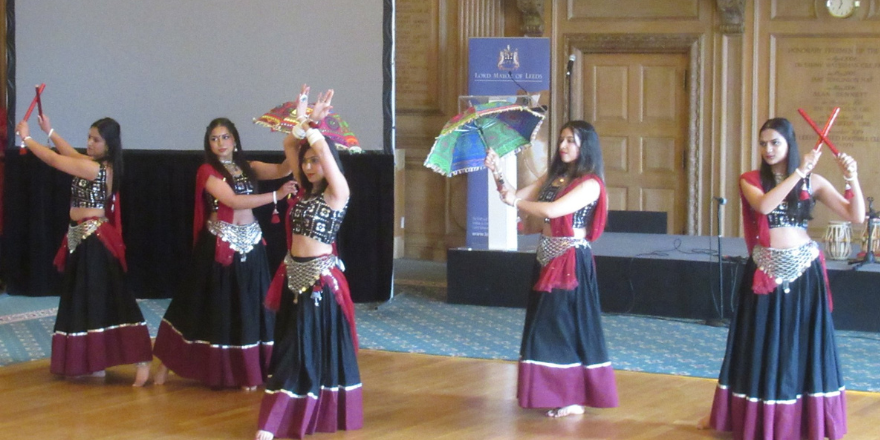
When I was invited to say a few words about the relationship between poetry and dance at the RadhaRaman International Dance Festival at Leeds Civic Hall last month, I gratefully accepted the offer. It’s a relationship I have sensed intuitively for a long time, and here was an excuse to take some time to really think about these remarkable artforms in a more focused way. As both a prose poet and an academic I am used to drawing diverse, often chaotic, ideas and observations together into neat verbal structures. However, in this case, the more I drew threads and thoughts together, the more they broke free, as in one of those folk tales in which an ill-fated protagonist must empty a bottomless pond with a sieve before sunrise.
I was reminded of a famous quotation of untraceable origin: “Writing about music is like dancing about architecture.” It’s a clever, provocative observation which, while ostensibly commenting on the futility of music criticism, also invites us to think about both the relationships and the marked divisions between distinct artforms. In invoking these juxtapositions, it effectively conjures them into existence: who can read this without imagining the possibilities of dancing about architecture?
This is just what the arts do; they are forms of magic which call things into existence that did not previously exist and may not even have been imagined. As Jack Anderson has noted in his thought-provoking article On the Move: Poetry and Dance, in some ways the two modes of expression could not be more different. He observes poetry as “an almost dematerialised art of words – just tiny squiggles of black marks on paper or sounds without visible substance produced by a human voice – while dance is an inescapably material art involving solid hunks of flesh, even when those hunks are ballerinas at their most sylphlike.”
I find this a wonderful, slightly tongue-in-cheek, assessment of difference. The subtext, however, reveals precisely what poetry and dance have in common – they are arts which stretch beyond themselves. If language is all about conveying information or meaning, poetry is about building a scaffold of words upon which meaning may alight. In a recent exchange with a writer acquaintance, I noted that two of our pieces – apart from such details as subject, words, genre, and form – were pretty much the same. To put it another way, what we had written was completely different but the structures we had built supported the same meanings.
I am no dancer, though the festival’s exuberant finale drew me into circling in delightful abandon with performers and audience members alike. As I said at the outset, I am foremost a prose poet and, as such, I’m always ready to listen to the words of Charles Baudelaire, the French symbolist poet who may be considered the founder of the form as it is now known. Baudelaire claimed that “dancing is poetry with arms and legs.” Dance, it seems to me, operates in an analogous manner to poetry, in that, while poetry gestures towards meaning beyond the common application of words, dance creates meaning beyond the common functions of the human body. To cite another quotation of uncertain attribution: “Dance enables you to find yourself and lose yourself at the same time.” So does poetry.
The RadhaRaman Dance Festival, with its dizzying array of cultures and forms, drew performers and audiences from all over the country. It was an example of vibrant multicultural Leeds at its very best. It was an honour to make a small contribution and, after opening myself up to the experience, I swear I’m just that little bit closer to being able to dance about architecture!
Oz Hardwick is Professor of Creative Writing at Leeds Trinity University.